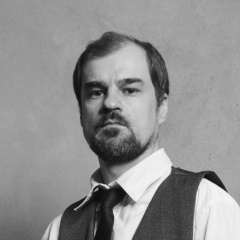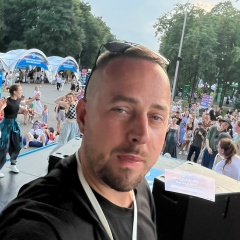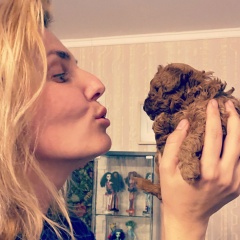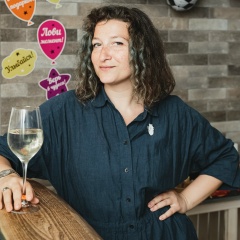Как говорится - "все по секретным документам". Когда заходят споры о событиях 9 января 1905 года, монархисты очень любят рассказывать о неких выстрелах из толпы, которые-де и заставили войска открыть огонь по рабочим. Когда вступаешь с ними в спор (никогда не прохожу мимо этой темы) и спрашиваешь, где пруфы, они либо сливаются, либо ссылаются на опровергнутые самой полицией в 1905 году источники, либо рассказывают про общий реальный размах революционного террора. Доказательств того, что выстрелы из толпы были в тот день у них нет. Хлопки, похожие на выстрелы, были только в колонне у Нарвских ворот. Нигде больше нет. Полицейские и армейские документы молчат о них. При этом в октябре 1905 года и, если мне не изменяет память, феврале 1917 года выстрелы действительно были зафиксированы.
Несколько лет назад, когда я заглянул на лекцию [id1032214|Андрея Борисовича] для студентов 3 курса про 1905 год, у нас с ним зашел спор про источники, рассказывающие о залпах из толпы. АБН, рассказал о публикации в журнале "Вопросы истории" воспоминаний пожилой женщины, которая девушкой была участницей шествия и видела выстрелы из толпы. При этом он сам не скрывал ироничного отношения к достоверности этого воспоминания, созданного через более чем полвека после событий. Все очень зыбко, но есть же воспоминание. Да, есть. Благодаря правому аналогу Википедии порталу "Традиция" я узнал что воспоминание было опубликовано в № 4 журнала "Вопросы истории" за 1996 год. Получается, что Мария Гавриловна рассказала об этой "страшной" тайне через 56 лет, когда ей было уже 75 лет. А Исаков написал в журнал еще через 35 лет. При этом этот Исаков явно не чужд патетики и поэтичности - "страшная тайна", "жизненный путь пересекся с судьбой". Естественно, об этом случае в известных документах нет упоминания, хотя в некоторых воспоминаниях 20-ых годов фигурирует студент, подошедший к строю солдат и разговаривавший с офицером. Вот такие замечательные письма писались в 1996 году в научные журналы. =-).
P.S. На днях в журнале "Отечественные архивы" вышла статья магистранта нашей кафедры [id40560001|Александра Петрова], уточняющая количество жертв 9 января. По-своему уникальная работа, серьезно дополняющая и без того массивную историографию "Кровавого воскресенья".
Несколько лет назад, когда я заглянул на лекцию [id1032214|Андрея Борисовича] для студентов 3 курса про 1905 год, у нас с ним зашел спор про источники, рассказывающие о залпах из толпы. АБН, рассказал о публикации в журнале "Вопросы истории" воспоминаний пожилой женщины, которая девушкой была участницей шествия и видела выстрелы из толпы. При этом он сам не скрывал ироничного отношения к достоверности этого воспоминания, созданного через более чем полвека после событий. Все очень зыбко, но есть же воспоминание. Да, есть. Благодаря правому аналогу Википедии порталу "Традиция" я узнал что воспоминание было опубликовано в № 4 журнала "Вопросы истории" за 1996 год. Получается, что Мария Гавриловна рассказала об этой "страшной" тайне через 56 лет, когда ей было уже 75 лет. А Исаков написал в журнал еще через 35 лет. При этом этот Исаков явно не чужд патетики и поэтичности - "страшная тайна", "жизненный путь пересекся с судьбой". Естественно, об этом случае в известных документах нет упоминания, хотя в некоторых воспоминаниях 20-ых годов фигурирует студент, подошедший к строю солдат и разговаривавший с офицером. Вот такие замечательные письма писались в 1996 году в научные журналы. =-).
P.S. На днях в журнале "Отечественные архивы" вышла статья магистранта нашей кафедры [id40560001|Александра Петрова], уточняющая количество жертв 9 января. По-своему уникальная работа, серьезно дополняющая и без того массивную историографию "Кровавого воскресенья".
As they say - "all according to secret documents." When disputes arise about the events of January 9, 1905, the monarchists are very fond of telling about certain shots from the crowd, which de made the troops open fire on the workers. When you enter into an argument with them (I never pass by this topic) and ask where the proofs are, they either merge, or refer to sources refuted by the police in 1905, or talk about the general real scope of revolutionary terror. There was no evidence that they had shots from the crowd that day. Shots, similar to shots, were only in a column at the Narva Gate. Nowhere else. Police and army documents are silent about them. At the same time, in October 1905, and if my memory serves me, in February 1917 the shots were indeed recorded.
A few years ago, when I looked at a lecture [id1032214 | Andrei Borisovich] for 3rd year students about 1905, we had a discussion with him about sources telling about volleys from the crowd. ABN, spoke about the publication in the journal Voprosy istorii of the memoirs of an elderly woman who was a participant in the procession and saw shots from the crowd. However, he himself did not hide the ironic attitude to the authenticity of this memory, created more than half a century after the events. Everything is very shaky, but there is a memory. Yes there is. Thanks to the right Wikipedia analogue of the Tradition portal, I found out that the memory was published in No. 4 of the journal Voprosy istorii in 1996. It turns out that Maria Gavrilovna told about this "terrible" secret after 56 years, when she was already 75 years old. And Isakov wrote to the journal after another 35 years. At the same time, this Isakov is clearly not alien to pathos and poetry - a “terrible secret”, “a life path crossed with fate”. Naturally, there is no mention of this case in well-known documents, although in some memoirs of the 20s a student appears, who approached the ranks of soldiers and talked with an officer. These wonderful letters were written in scientific journals in 1996. = -).
P.S. Recently, an article by a graduate student of our department [id40560001 | Alexander Petrov] was published in the journal "Domestic Archives", specifying the number of victims on January 9. A unique work in its own way, seriously complementing the already massive historiography of Bloody Sunday.
A few years ago, when I looked at a lecture [id1032214 | Andrei Borisovich] for 3rd year students about 1905, we had a discussion with him about sources telling about volleys from the crowd. ABN, spoke about the publication in the journal Voprosy istorii of the memoirs of an elderly woman who was a participant in the procession and saw shots from the crowd. However, he himself did not hide the ironic attitude to the authenticity of this memory, created more than half a century after the events. Everything is very shaky, but there is a memory. Yes there is. Thanks to the right Wikipedia analogue of the Tradition portal, I found out that the memory was published in No. 4 of the journal Voprosy istorii in 1996. It turns out that Maria Gavrilovna told about this "terrible" secret after 56 years, when she was already 75 years old. And Isakov wrote to the journal after another 35 years. At the same time, this Isakov is clearly not alien to pathos and poetry - a “terrible secret”, “a life path crossed with fate”. Naturally, there is no mention of this case in well-known documents, although in some memoirs of the 20s a student appears, who approached the ranks of soldiers and talked with an officer. These wonderful letters were written in scientific journals in 1996. = -).
P.S. Recently, an article by a graduate student of our department [id40560001 | Alexander Petrov] was published in the journal "Domestic Archives", specifying the number of victims on January 9. A unique work in its own way, seriously complementing the already massive historiography of Bloody Sunday.

У записи 13 лайков,
2 репостов,
677 просмотров.
2 репостов,
677 просмотров.
Эту запись оставил(а) на своей стене Константин Макаров

































